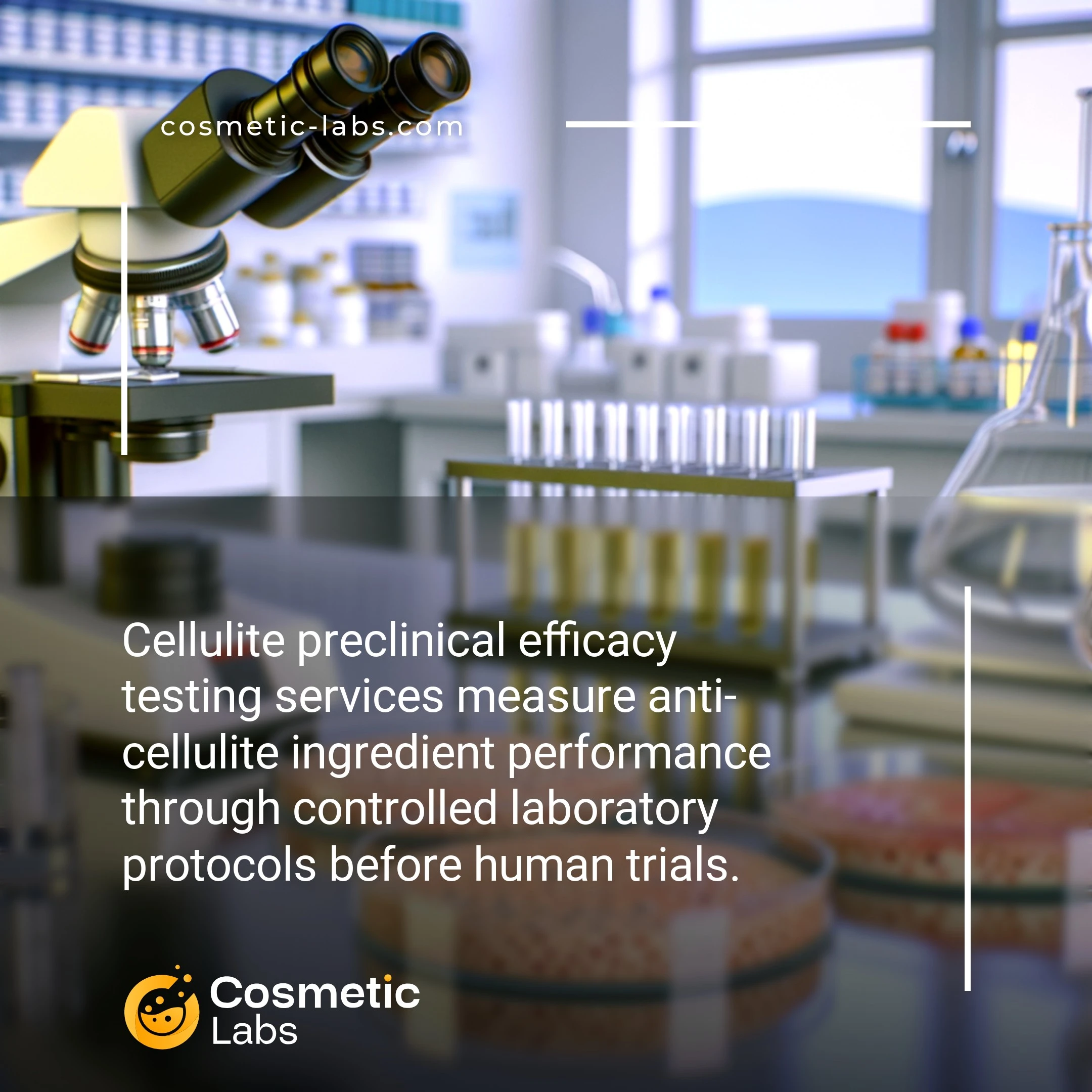Cellulite Testing Services for Anti-Aging Product Development

What is Cellulite efficacy testing?
Cellulite preclinical efficacy testing services evaluate anti-cellulite ingredients and formulations through laboratory methods before human trials. These tests measure how well active compounds improve skin texture, reduce dimpling appearance, and enhance dermal thickness using standardized protocols like collagen synthesis assays. Labs analyze ingredient penetration, fat cell behavior, and microcirculation effects to provide data-driven proof of concept for your cellulite-targeting products.
Why do you need this service?
Cosmetic labs on our platform help brands validate anti-cellulite formulations through skin texture analysis and dimpling reduction measurements before launching products. Teams submit topical creams, serums, and massage oils for controlled testing protocols that measure skin smoothness improvements and fat layer thickness changes. These studies provide quantifiable data for marketing claims and regulatory submissions, letting you confidently promote cellulite reduction benefits with scientific backing from partner laboratories.
Who provides Cellulite efficacy testing services?
All cosmetic labs providing Cellulite efficacy testing services
There is no company providing these services at the moment.
Cellulite Preclinical Efficacy Testing Services
Cellulite testing protocols help brands validate anti-cellulite claims before market launch through controlled laboratory assessments. These preclinical studies measure skin texture improvements, dimpling reduction, and firmness enhancement using standardized methodologies that support regulatory submissions and marketing claims.
In Vitro Testing Methods
Cellulite efficacy testing starts with cell culture models that simulate adipose tissue behavior and collagen synthesis. Labs use 3T3-L1 adipocytes to test ingredient effects on fat cell formation and lipolysis activity. These assays measure lipid accumulation, glycerol release, and enzyme activity within 7-14 days.
Key testing parameters include:
- Adipogenesis inhibition rates
- Lipolytic enzyme activation
- Collagen production enhancement
- Microcirculation improvement markers
Skin Model Applications
Advanced skin tissue models replicate cellulite formation mechanisms using reconstructed dermal equivalents. These 3D models test how active ingredients penetrate skin layers and affect subcutaneous fat organization. Labs measure changes in tissue architecture, elastin fiber density, and inflammatory markers over 21-28 day treatment periods.
Testing focuses on dermal thickness changes, fibroblast activity, and extracellular matrix remodeling. Results provide quantitative data for ingredient concentration optimization and formulation development. Connect with specialized labs on our platform to design custom cellulite testing protocols that align with your product claims and target market requirements.
6 subcategories of Cellulite efficacy testing services
There are no results matching your search
Practical Applications of Cellulite Preclinical Efficacy Testing
Cosmetic labs deliver cellulite preclinical efficacy testing applications that validate anti-cellulite formulations before human trials, reducing development costs and regulatory risks.
Active Ingredient Validation for Anti-Cellulite Products
Labs test caffeine, retinol, and peptide-based formulations using standardized adipocyte models and lipolysis assays. These protocols measure fat cell breakdown rates and collagen synthesis markers within 14-21 days. Testing teams evaluate ingredient penetration through skin barrier models, determining optimal concentrations for maximum efficacy.
Brands receive dose-response curves, cytotoxicity profiles, and mechanism-of-action data. This information guides formulation adjustments and supports regulatory submissions for cosmetic claims.
Formulation Optimization and Stability Assessment
Testing protocols compare different delivery systems like liposomes, microspheres, and topical gels for cellulite reduction compounds. Labs measure active ingredient release rates, skin penetration depth, and bioavailability using Franz diffusion cells and tape stripping methods.
Stability studies track formulation performance over 6-12 months under various storage conditions. Results include degradation kinetics, pH stability ranges, and packaging compatibility data that inform shelf-life determinations.
| Testing Method | Measurement | Timeline | Key Output |
|---|---|---|---|
| Adipocyte Lipolysis Assay | Glycerol release | 7-14 days | Fat breakdown efficacy |
| Collagen Synthesis Assay | Procollagen production | 14-21 days | Skin firmness potential |
| Penetration Studies | Active concentration | 24-48 hours | Bioavailability data |
| Cytotoxicity Testing | Cell viability | 3-5 days | Safety profile |
Ready to validate your anti-cellulite formulation? Connect with experienced cosmetic labs on our platform for specialized preclinical testing services tailored to your product development needs.

